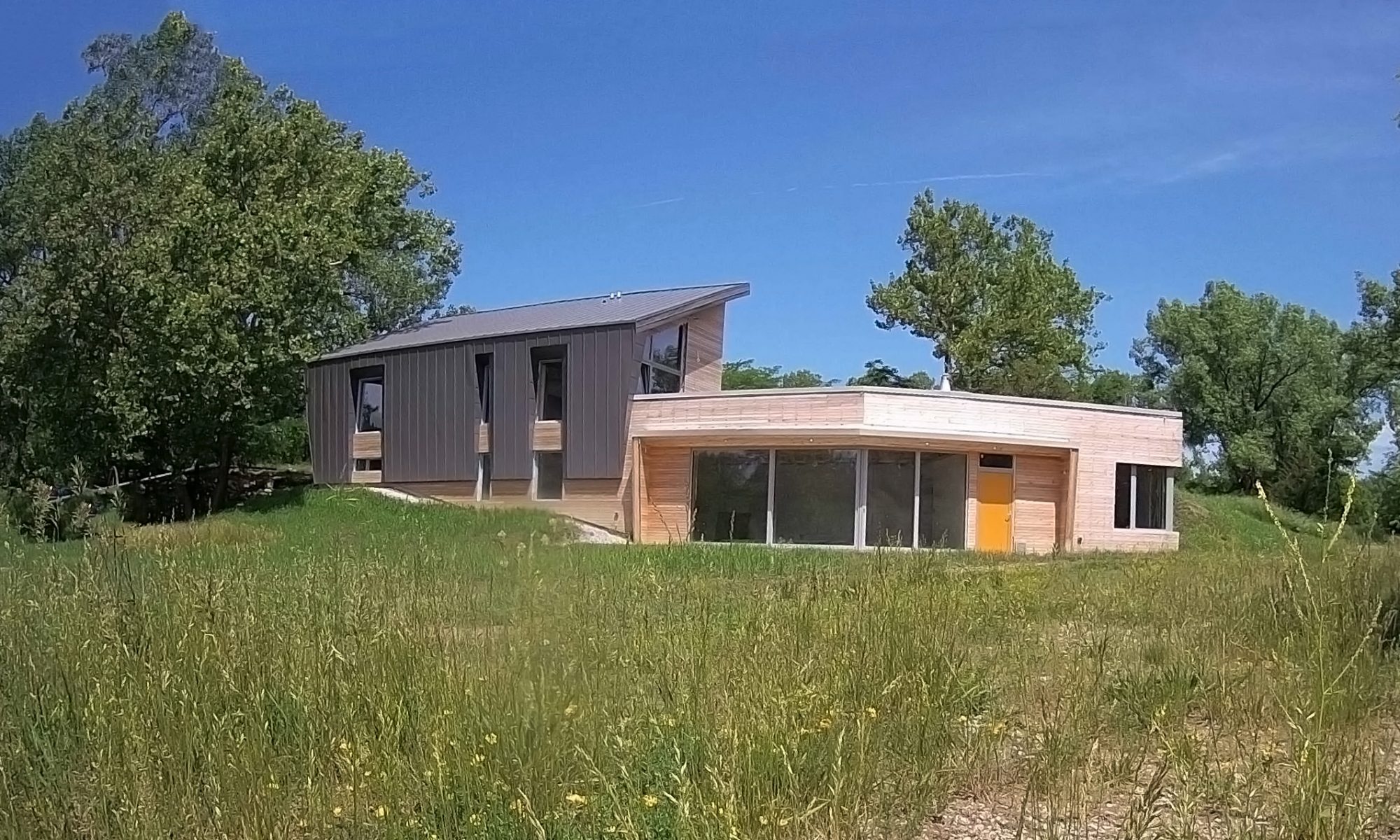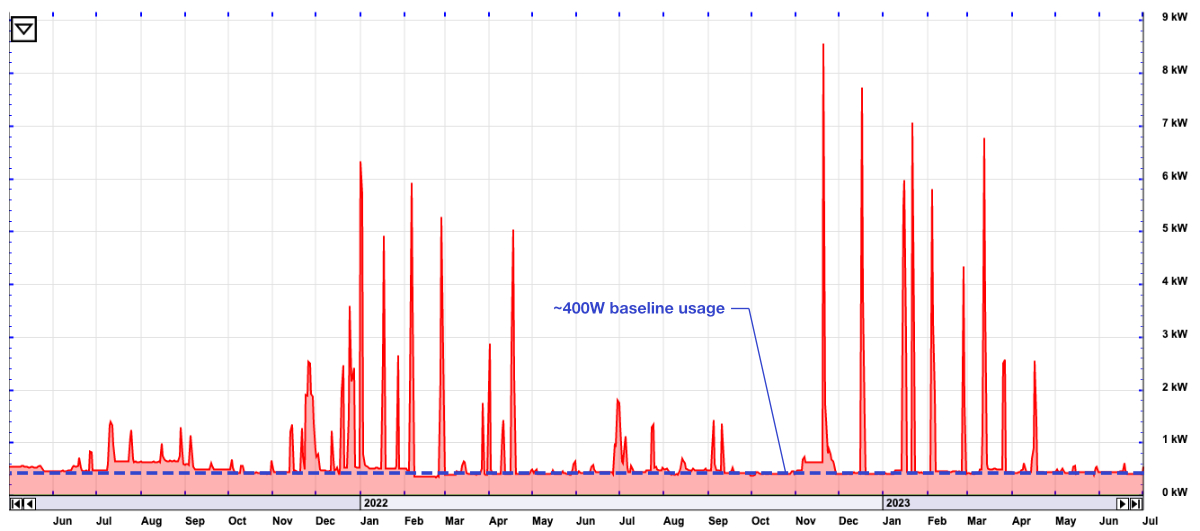Over the past three years of operation, the home’s baseline energy use has remained remarkably consistent — and remarkably low. The typical baseline energy use for the entire home is a mere 400W — less than many refrigerators. This includes all equipment that is always running: the Energy Recovery Ventilator, refrigerator, radon fan, and Internet equipment.
However, this figure also includes approximately 280W from servers and associated equipment, and about 20W from monitoring devices (eGauge and wireless receiver for temperature/humidity monitors) — which are neither a typical nor necessary loads for the home’s operation. If we remove these, the actual baseline use is closer to 100W — the amount of an old incandescent bulb. That translates to a utility bill of about $10 per month. (1)
How can a home run on 100W? Because we very carefully selected all appliances — and especially those that run continuously — for the lowest possible energy use. Bottom-up analysis of expected usage confirms that we’re in the right ballpark:
- ERV: 0.34 W/CFM * 120 CFM = 41W
- Refrigerator: 50W
- Radon fan: 17W
- Internet router: 6W
This comes to 114W, which is close to what we actually see. In reality, the home’s lower temperature setpoints likely make the refrigerator slightly more efficient, and the owners set the ERV to a lower airflow rate when they are not home, both of which bring down the average. On the other hand, there are likely some other low-level loads that contribute toward the baseline, such as standby power from various appliances.
The spikes that take the home above this baseline are primarily heating, and secondarily water heating and cooking. The highest spikes predictably occur in January and February. Most likely, these highs correspond with the coldest cloudy days, since the home is able to maintain relatively comfortable temperatures without any added heat, particularly in sunny weather.
Based on my previous analysis of 3 years of data, the total monthly energy use of the home averages about 1,370W, for an average monthly bill of $140. Or, if we subtract the servers and other atypical equipment loads, the average comes down to 570W and a $58 monthly bill — again, close to an average refrigerator.
Note that all of this is before solar. Based on the first three years of monitoring, a solar array of roughly 7.5kW would be sufficient to meet 100% of the home’s energy needs, and bring the utility bills to $0. Without the extra equipment loads, a 3.5kW array would be sufficient.
Finally: In part based on this data, the owners have continued to look for ways to reduce the server and other technology loads. This includes virtualizing servers, upgrading equipment with more efficient models, and scaling back where possible. Some of this work is only recently completed — so, we should continue to see a reduction in the baseline usage. That’s the beauty of monitoring!
While I’ve generally paid a lot of attention to the low heating and cooling loads of this house, the low baseline energy use is also important. By selecting ultra-efficient equipment for the items that run continuously, we have a very low starting point for our monthly bills — all while still maintaining excellent indoor air quality and modern conveniences.

